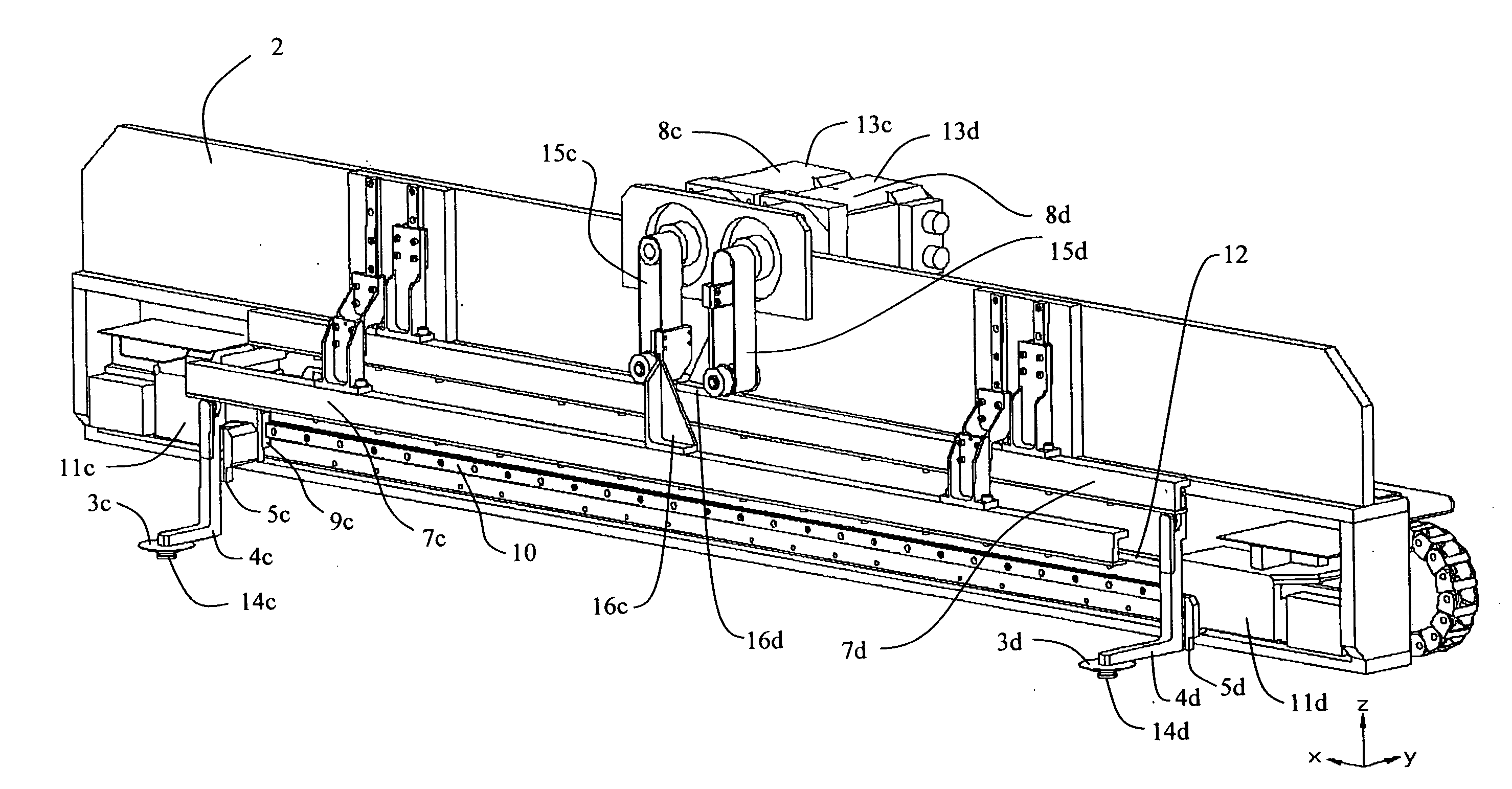High speed linear pick-and-place
- Summary
- Abstract
- Description
- Claims
- Application Information
AI Technical Summary
Benefits of technology
Problems solved by technology
Method used
Image
Examples
Embodiment Construction
[0023]FIG. 1 illustrates the invention which comprises two identical linear pick-and-place assemblies 1 and 2. For clarity, FIG. 3 shows just linear pick-and-place assembly 2. The assembly has two subassemblies with independently positionable (in height (z) and horizontally (x)) vacuum pick-and-place nozzles 3c and 3d. The two assemblies are positioned (see FIG. 3) so that all 4 nozzles 3a, 3b, 3c, and 3d can all pick from common shared locations and place to other common shared locations and where all these locations share a common centerline. FIG. 3 shows the 4 nozzles at different heights. All the nozzles move in the same plane. Referring now to FIG. 2, each vacuum nozzle 3c and 3d has a surface 14c and 14d that contacts the electrical device. This surface has a hole to allow air to flow through. This hole is at times evacuated so that the device can be sucked onto the nozzle. Each nozzle is connected to an arm 4c and 4d which is connected to a dedicated vertical bearing 5c and 5...
PUM
| Property | Measurement | Unit |
|---|---|---|
| Length | aaaaa | aaaaa |
| Speed | aaaaa | aaaaa |
| Height | aaaaa | aaaaa |
Abstract
Description
Claims
Application Information
 Login to View More
Login to View More - R&D
- Intellectual Property
- Life Sciences
- Materials
- Tech Scout
- Unparalleled Data Quality
- Higher Quality Content
- 60% Fewer Hallucinations
Browse by: Latest US Patents, China's latest patents, Technical Efficacy Thesaurus, Application Domain, Technology Topic, Popular Technical Reports.
© 2025 PatSnap. All rights reserved.Legal|Privacy policy|Modern Slavery Act Transparency Statement|Sitemap|About US| Contact US: help@patsnap.com



